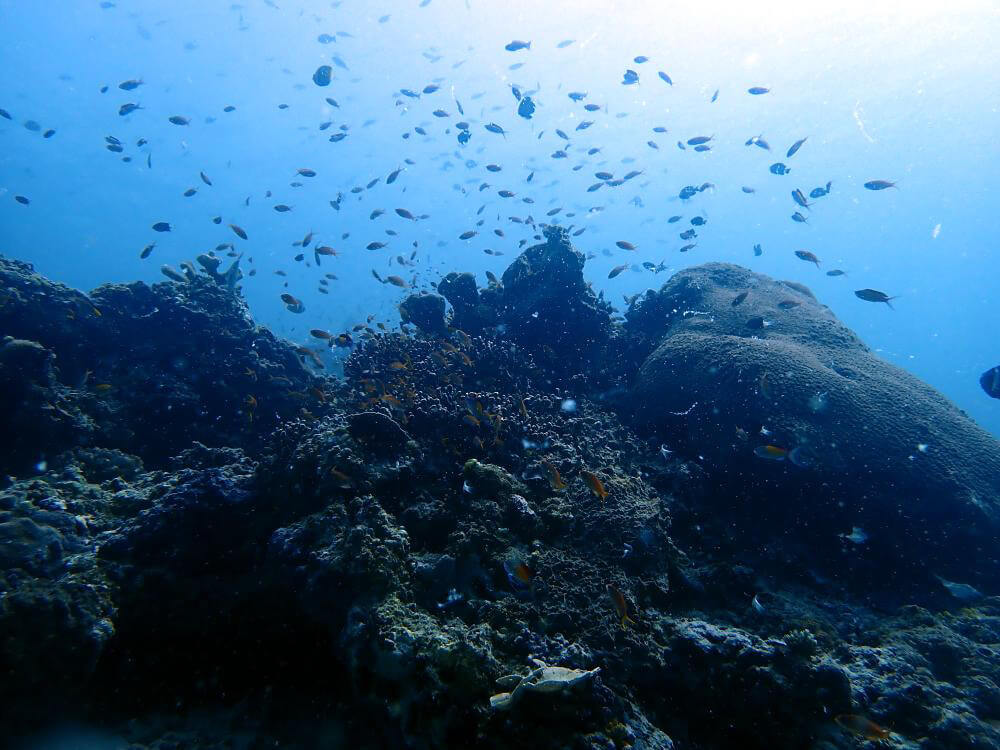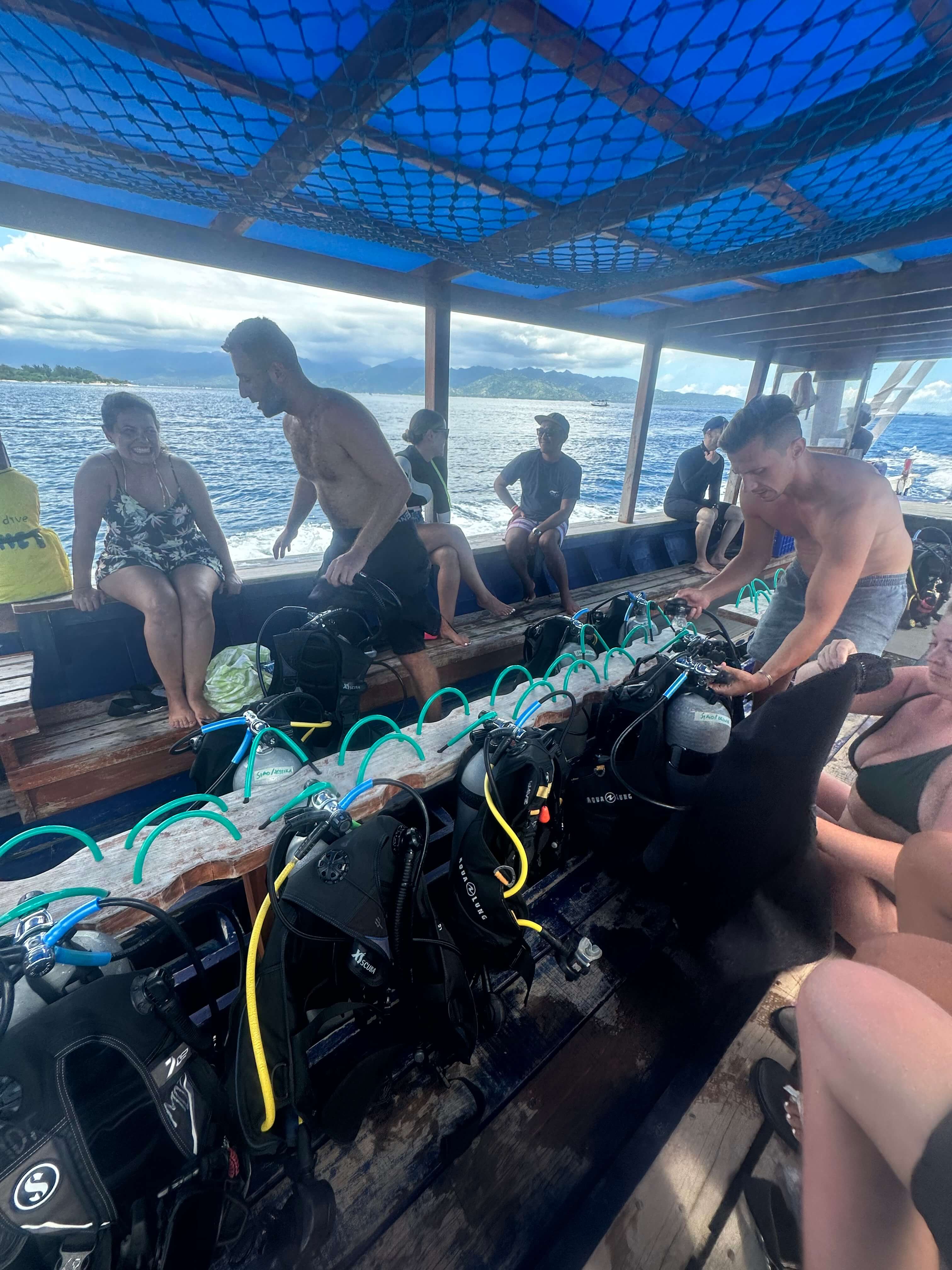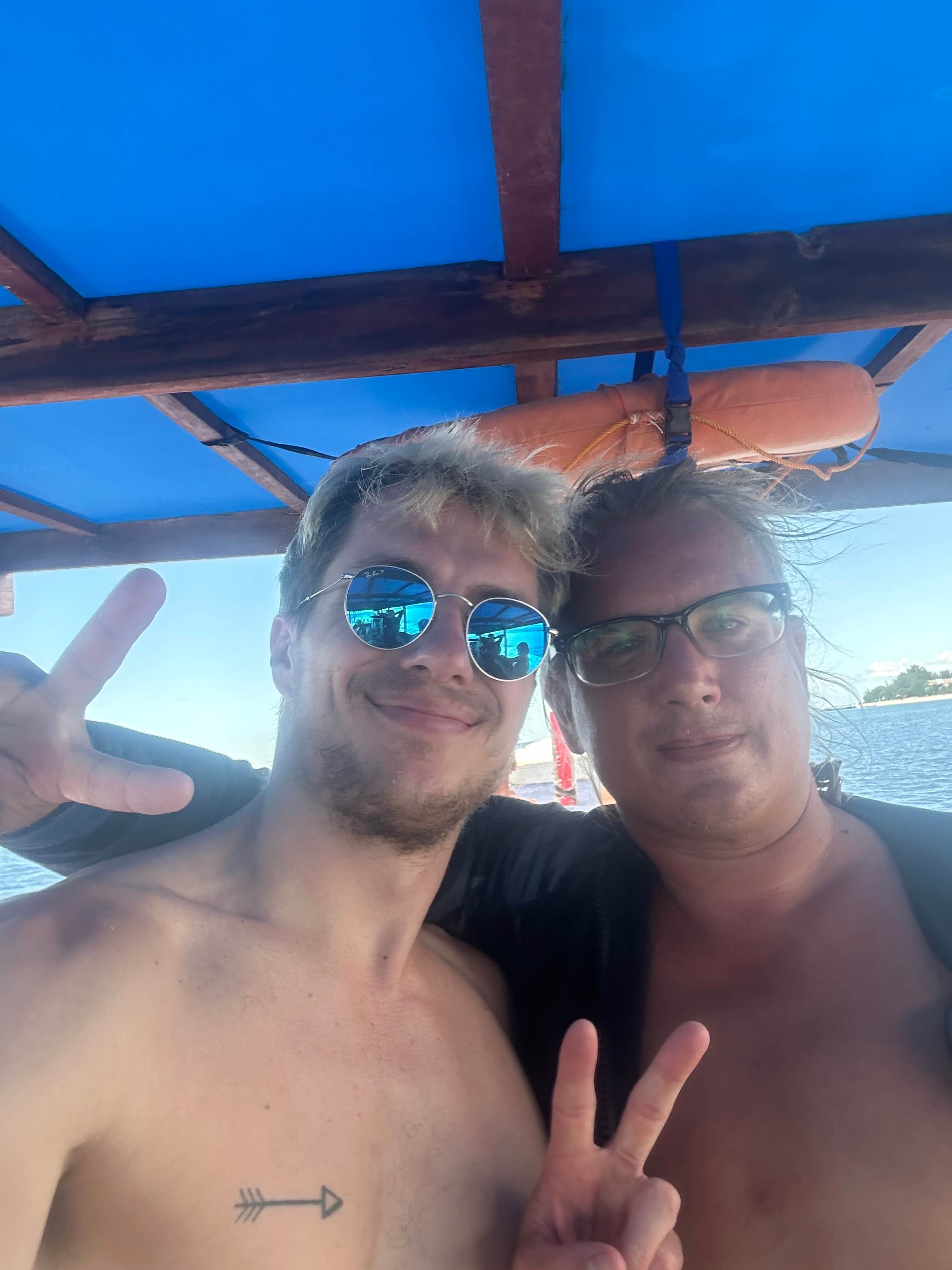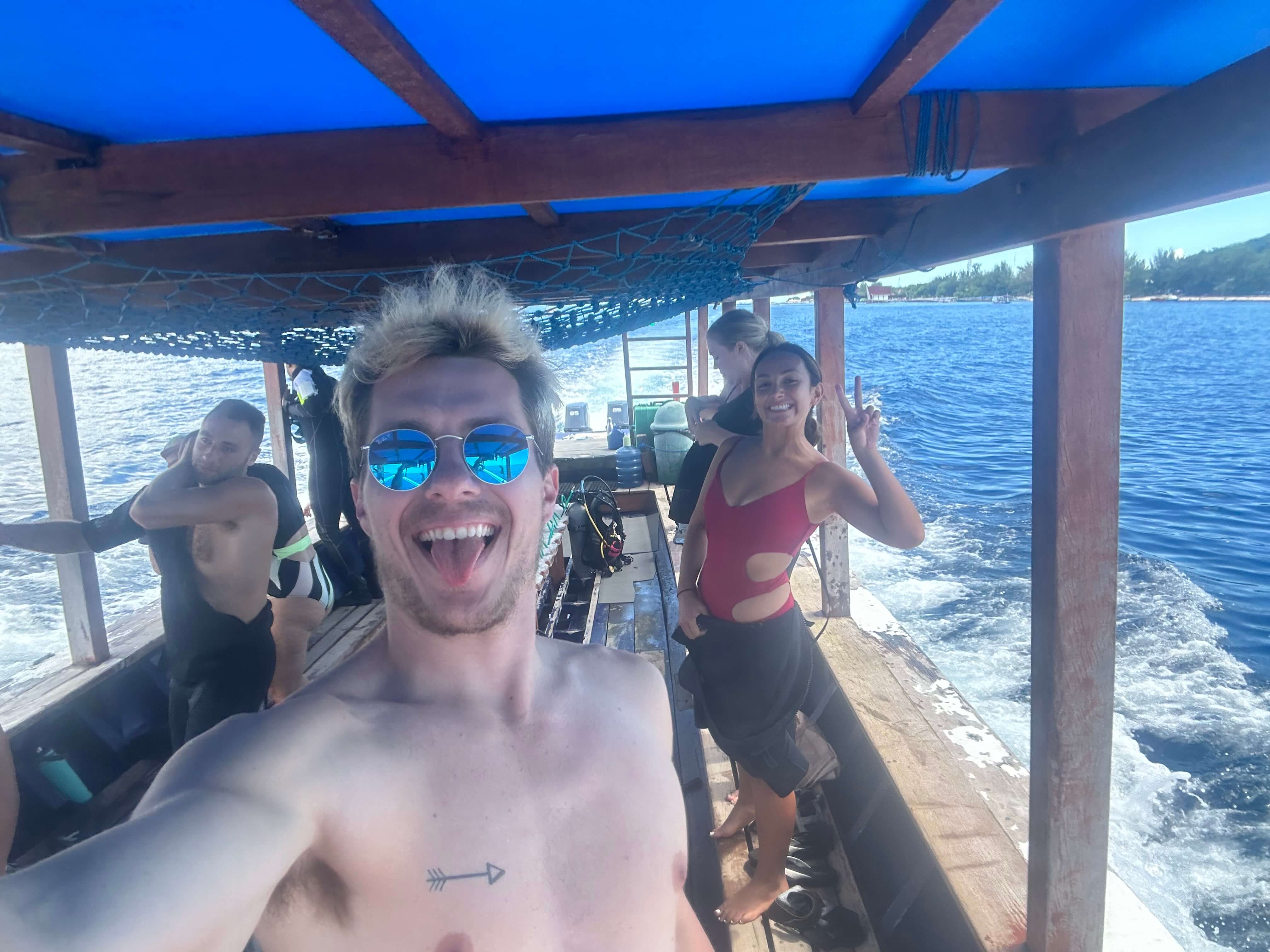





Staying in hostels has pros and cons. With dorms, for example, pros include lower cost, but cons include many noise and light related sleep deterrents. If you’re a heavy sleeper and don’t mind sharing sleeping quarters with strangers, you’re set. However, if you’re a light sleeper like me, it can be tricky. One of my roommates was partying this night and constantly coming in and out of the room multiple times throughout the night. I accept the pros and cons that come with staying in a dorm and don’t expect people to not party and enjoy their travels. Normally when I’m traveling, I party a fair amount and after a night out, it’s easier for me to stay asleep through the night. While diving, it’s unwise and unsafe to party or get little rest the nights before dive. Given my priority for diving on Gili T, after this night, I elected to move from a dorm to a private room at a hostel after two consecutive nights of mediocre rest at Atlas Hostel.
In the morning, our group met at Manta and prepared our equipment for our first ocean dive. We did our checks, loaded up the boat, and then made way to Halik, our first dive site. As soon as we made our backflip entry off the boat and into the ocean, the long day before spent in the pool was immediately worth it. Before we even descended, I poked my head in the water and observed a giant hawksbill turtle directly beneath me. Dive #1 had a duration of 35min, max depth 11.9m, and avg. depth 5.5. Wildlife seen includes a white tip shark baby (pup), green turtles, hawksbill turtles, and for the fish, I’ll refer to them as the “Gili gills” herein because there were several species seen at every dive on Gili T, these include angelfish, butterfly fish, clownfish, surgeonfish, sweetlips, grunts, parrotfish, soldierfish, banner fish, and trumpetfish. During our safety stop on the ascent, we practiced the out of air procedures. The otherworldly feeling that comes with immersing in submerging, that zero-gravity floating sensation, diversity and endless possibilities of wildlife, and captivating colorful coral collage from that first dive spoke to me and told me diving was meant for me. I surely didn’t feel this “hook” from the first time diving 11 years ago in large due to the lack of wildlife at the site and knowledge of what I was doing.
We took a break for lunch. Liv, Nicole, Solly, and I ate at Sandbar, then I moved my bags and checked in to Compass Divers hostel. Compass Divers hostel had a private room available for $12USD per night and would be my home for the remainder of my time on Gili T. Back at Manta, we covered a little bit of diving theory led by our instructor Maury, who I call the Italian Stallion. Once we finished with the lessons, we headed back to the boat to set out for our second dive.
Dive #2 was at Meno Wall, had a duration of 40min, max depth 12.0m, and avg. depth 7.0m. Wildlife observed includes turtles, pufferfish, and the Gili gills. I enjoyed swimming alongside a wall reef, viewing the wildlife from a different angle. During our safety stop on the ascent, again we practiced out of air procedures.Back at Manta, we cleaned our gear, then our instructor Simo bought us a round of beers for our debrief following our first day of ocean dives. What a guide, what a guy!
Back at Compass Divers Hostel, I made friends with fellow travelers Paul (Colorado, USA), Deepthee (Chicago, USA), and Tilda (Sweden). This was the first time in Southeast Asia (apart from the Superbowl) I was surrounded by a group of predominantly Americans. We chatted for a bit before making our way to Irish Bar, where we would meet Liv, Nicole, and Solly for dinner.